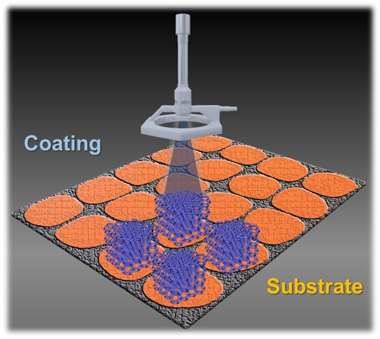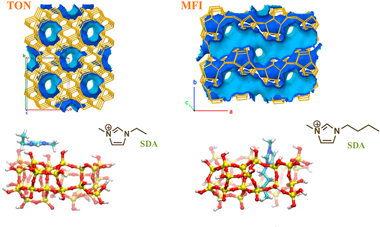Scientific Papers in SCI
2021
2021
Química de Superficies y Catálisis
Current scenario and prospects in manufacture strategies for glass, quartz, polymers and metallic microreactors: A comprehensive review
Dominguez, MI; Centeno, MA; Martinez, TM; Bobadilla, LF; Laguna, OH; Odriozola, JAChemical Engineering Research & Design, 171 (2021) 13-35
Show abstract ▽

One of the most remarkable benefits of the microreactors is the achievement of more efficient processes by enhancing the heat and mass transfer phenomena, which is the key factor for processes intensification in chemical reactions, resulting in higher conversion, selectivity and yield towards desired products. Currently, the entire scenario of microreaction approach is an emergent technology and further advances are ongoing. Several strategies have been successfully applied for structuring processes that imply the fixation of the catalysts on the microreactors. However, there are features such as the physicochemical stability of the coatings under reaction conditions that must be improved, motivating the search for new protocols. This review provides a general overview of the most important methodologies applied for glass, quartz, polymers and metals microreactors manufacture and for their coating, analyzing the advantages and drawbacks of every procedure. Furthermore, an outline of the novel insights based on additive manufacturing techniques are described.
July, 2021 | DOI: 10.1016/j.cherd.2021.05.001
Nanotecnología en Superficies y Plasma
Characterizing the physicochemical and mechanical properties of ZrN thin films deposited on Zr substrates by pulsed laser technique
Ghemras, I; Abdelli-Messaci, S; Alili, B; Gonzalez-Elipe, AR; Rico, VJ; Izerrouken, M; Khereddine, AY; Hadj-Larbi, FEuropean Physical Journal-Applied Physics, 95 (2021) 10301
Show abstract ▽
Due to their outstanding physical and mechanical features, ZrN thin films are increasingly used as coatings to protect materials intended for nuclear applications such as Zirconium. To our knowledge, there is no report of pulsed laser deposition (PLD) of ZrN thin films on a Zr substrate. In this work, we have successfully prepared ZrN thin films on Zr substrates using the PLD technique with a KrF excimer laser, in a N-2 environment at 2 Pa pressure and a fixed substrate temperature of 500 degrees C. The deposited 200 nm ZrN thin films exhibited a homogeneous surface and showed a face-centered cubic polycrystalline structure. The surface roughness was 3.69 nm. X-ray diffraction, Raman and X-ray photoelectron spectroscopy measurements confirmed the presence of ZrN. The coated sample's mean value of hardness (11.6 GP) doubled that of the uncoated sample.
July, 2021 | DOI: 10.1051/epjap/2021210064
Química de Superficies y Catálisis
How a small modification in the imidazolium-based SDA can determine the zeolite structure? MFI vs. TON
Megias-Sayago, C; Blanes, JMM; Szyja, BM; Odriozola, JA; Ivanova, SMicroporous and Mesoporous Materials, 322 (2021) 111160
Show abstract ▽

The present study proposes an important contribution to the understanding of ionic liquid role as structure directing agent for zeolite synthesis. A series of imidazolium based ionic liquids are used for this purpose. While the anionic counterpart influences the micellar organization during the synthesis, the imidazolium cation clearly directs the structure to one or another zeolite family as a function of its substituents and their interaction with the zeolite framework. The experimental observations are contrasted with molecular modeling explaining the distinct zeolite families obtained on the basis of different preferential orientation of the ionic liquids to the Si33 precursor.
July, 2021 | DOI: 10.1016/j.micromeso.2021.111160
Reactividad de Sólidos
Tuning the excitation wavelength of luminescent Mn2+-doped ZnSxSe1-x obtained by mechanically induced self-sustaining reaction
Aviles, MA; Gotor, FJOptical Materials, 117 (2021) 111121
Show abstract ▽
Mn2+-doped ZnSxSe1-x solid solution samples (Mn:ZnSxSe1-x) were synthesized by the mechanochemical process denoted as mechanically-induced self-sustaining reaction from Mn/Zn/S/Se powder elemental mixtures. The samples were characterized by X-ray diffraction, scanning electron microscopy, diffuse reflectance UV-Vis spectroscopy and emission and excitation photoluminescence measurements. The band-gap energy of samples was controlled by changing the stoichiometry, x, of the solid solution. All samples showed the characteristic Mn2+ 4T1-6A1 emission at -588 nm when exciting the host material, so it was possible to tune the excitation wavelength from 349 nm to 467 nm. However, an efficiency loss was observed with increasing Se content, probably due to the overlap between the absorption and emission spectra that induced self-absorption and emission quenching.
July, 2021 | DOI: 10.1016/j.optmat.2021.111121
Archeometric characterization (physical-chemical and microstructural) of tiles in the Mudejar Palace of the Royal Alcazar of Seville using non-invasive quantitative chemical methods
Perez-Rodriguez, JL; Robador, MD; Castaing, J; de Viguerie, L; Garrote, MA; Pleguezuelo, ABoletin de la Sociedad Española de Ceramica y Vidrio, 60 (2021) 211-228
Show abstract ▽
The Palaces in the Alcazar of Seville, Spain, are famous for their ceramic decoration. The technique of tessellation was used extensively in all rooms in the Mudejar Palace, dated in the fourteenth century. These glazed ceramics have been analysed in situ using noninvasive quantitative chemical methods of X-ray fluorescence and diffraction (XRF and XRD). Micro-samples were taken to prepare cross-sections and analysed by optical and electronic microscopy. The composition of these ceramics, their manufacturing technique and the time of application in the different areas of the Palace have been characterized in this work. Five colours have been found in the glazed ceramics: green, black, molasses, white and blue. Fe, Co, Cu, Mn and Sn are the main chemical elements responsible for the colour of the glass phase of these ceramics. Wollastonite, quartz, bustamite and feldspars inclusions have been found in the glass phase. Casiterite and Malayaite have been also characterized by XRD. The ceramic paste used for manufacturing was calcic and was heated at about 900 degrees C. Thenardite, gypsum, sodium chloride and nitrogen compounds have been characterized in the ceramic and are responsible for their alteration. The information obtained in the 24 zones studied shows that there is no homogeneity in the ceramics due to the different times in which the tiles were placed and the restorations carried out over time. There are 3 main groups of ceramics: a) probably from 14th century, b), probably from 15-16th centuries and c) from 19-20th centuries and recent restorations.
July, 2021 | DOI: 10.1016/j.bsecv.2020.03.001
- ‹ previous
- 72 of 410
- next ›














